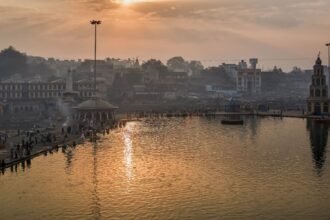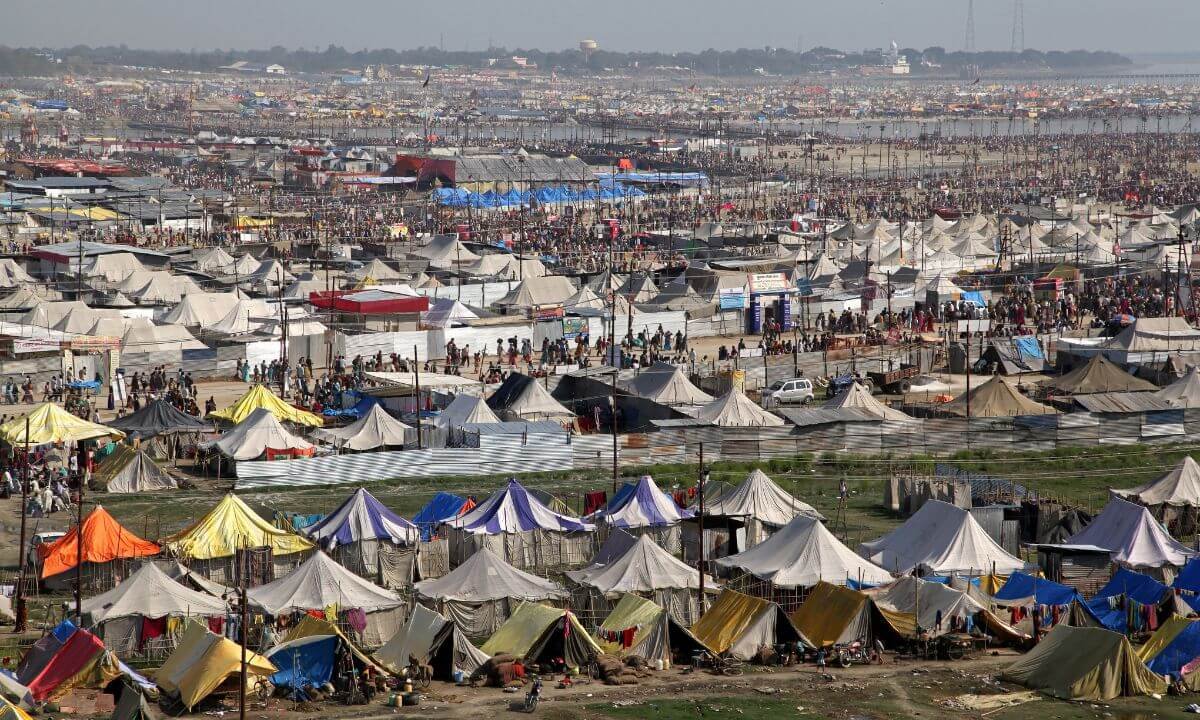When millions gather on the banks of a holy river, when saints march in silence and devotion swells like a tide—what you see at Kumbh Mela 2027 in Nashik is just the surface. Beneath it lies an enormous, orchestrated effort—a spiritual, administrative, and logistical masterpiece that begins months, even years in advance.
- 1. Planning Begins Years in Advance
- 2. Site Surveys and Ghat Engineering
- 3. Temporary City Construction
- 4. Akhara Allocation and Spiritual Zoning
- 5. Sanitation, Waste Management, and Water Safety
- 6. Safety, Security, and Emergency Response
- 7. Transport and Route Management
- 8. Cultural and Spiritual Event Programming
- 9. Digital Infrastructure and Smart Mela Tools
- 10. Training of Volunteers and Sevadars
- In Conclusion
From government officials to Naga sadhus, engineers to cooks, entire ecosystems activate behind the scenes to prepare for one of humanity’s oldest and largest gatherings.
Here’s what really happens before the first devotee steps foot into the sacred grounds of Kumbh Mela 2027.
1. Planning Begins Years in Advance
While the spiritual timing of the Kumbh Mela is determined by astrological alignments, its physical planning starts nearly 2–3 years prior.
Key stakeholders:
- State and central governments (Urban Development, Tourism, Health, Transport)
- Local Nashik administration and municipal bodies
- Religious Akhara Parishads and spiritual leaders
- Disaster management authorities and security agencies
Together, they form the Kumbh Mela Coordination Committee, which drafts everything from land allocation to safety protocols.
2. Site Surveys and Ghat Engineering
The ghats of Ramkund and Trimbakeshwar are surveyed for:
- Water depth and flow patterns
- Erosion-prone banks
- Accessibility for large crowds and emergency evacuation
- Design of temporary and permanent bathing zones
Engineers and urban planners collaborate to ensure safe and sacred access to the Godavari River for the Shahi Snan and daily rituals.
3. Temporary City Construction
A temporary city is built on open lands, complete with:
- Tented accommodation zones (luxury to basic)
- Roads, footpaths, LED lighting, and solar power setups
- Toilets, water tanks, and sanitation units
- Food distribution kitchens (langars)
- Medical centers and quarantine zones
- Police booths, fire stations, and disaster relief tents
This city is designed to rise in 4 months and disappear in 4 weeks, leaving minimal ecological impact.
4. Akhara Allocation and Spiritual Zoning
One of the most sacred parts of Kumbh planning is allocation of land to Akharas.
- Zones are divided according to tradition and precedence
- Each Akhara sets up a mini-campus with tents, altars, Yajna kunds, and living spaces for sadhus
- Entry paths are coordinated for Shahi Snan processions and public darshans
These camps become spiritual sanctuaries where millions come to receive blessings and wisdom.
5. Sanitation, Waste Management, and Water Safety
Hygiene is a monumental task.
Preparations include:
- Deployment of mobile bio-toilets and sanitation workers
- Installation of handwashing stations and water filters
- Regular cleaning of ghats and pathways
- Coordination with NGOs for awareness drives on cleanliness and plastic use
The goal is to maintain the sacredness of the river while ensuring public health.
6. Safety, Security, and Emergency Response
Safety preparation is multi-layered:
- CCTV surveillance and drone monitoring
- Deployment of rapid action forces, NDRF, and local police
- Construction of watch towers, barricades, and emergency exits
- On-site ambulances, oxygen tents, and mobile hospitals
- Real-time crowd density management via AI and heatmaps
These systems are tested through simulations and mock drills in advance.
7. Transport and Route Management
To accommodate the influx of pilgrims:
- Roads are widened, repaired, and rerouted
- Railway stations are upgraded with temporary platforms and booking counters
- Shuttle buses and e-rickshaws are added for last-mile connectivity
- Helipads may be constructed for VIP and emergency access
- Real-time traffic monitoring and smart signage systems are implemented
All travel planning is designed to prevent bottlenecks and ensure accessibility.
8. Cultural and Spiritual Event Programming
Alongside infrastructure, there’s a parallel effort to plan:
- Katha sessions, satsangs, and yoga camps
- Cultural evenings with classical music and folk dance
- Art installations and exhibits on Indian heritage
- Workshops for international visitors and spiritual tourism
This layer gives the Kumbh its soulful rhythm, enriching the pilgrim’s experience beyond the rituals.
Also read : Top Rituals and Spiritual Moments at Kumbh Mela 2027
9. Digital Infrastructure and Smart Mela Tools
Kumbh Mela 2027 will feature:
- Official apps for maps, schedules, and alerts
- QR-coded wristbands for tracking vulnerable pilgrims
- E-booking for tents, bathing slots, and darshan timings
- Drone footage, livestreams, and 360° virtual tours
- Multilingual help desks and AI chat support
Technology helps maintain order in devotion and enhances access for all.
10. Training of Volunteers and Sevadars
Tens of thousands of volunteers and sevadars are trained in:
- Crowd management and first aid
- Elderly and differently-abled assistance
- Pilgrim coordination, information desks, and lost & found
- Hospitality for foreign visitors
- Temple and ghat etiquette
These volunteers are the compassionate engine that keeps the Mela running smoothly.
In Conclusion
What unfolds at Kumbh Mela 2027 is not spontaneous—it is the result of unseen devotion, discipline, and meticulous preparation. From the rise of tent cities to the arrival of saints, every moment is made possible by an army of invisible hands and spiritual intent.
When you walk the paths of Nashik in 2027, remember—the sacred ground beneath your feet was readied with prayer, planning, and purpose.





